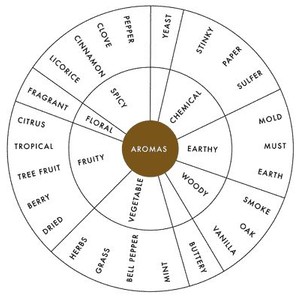Speaking my Language

It can be hard to talk about wine. It's difficult to know what words to use and it can be intimidating – what if I get it wrong? To make it easier we've written this guide to help you start describing wine like an expert. But it's important remember that ultimately wine is made to be enjoyed. Wine preferences are extremely personal – everyone has different likes and dislikes – so there really is no right or wrong.
Now let's dive into how you describe wine. There are three types of descriptors. I’m going to call them generic, specific and abstract. Each one has its own benefits and challenges.
The generic words we use to describe wine are probably also the ones that you’ll hear most commonly. These are terms such as light, dry, smooth, sharp, or rough. There are a few more that don’t enter the lexicon quite so readily. If a wine has too much acidity it is called sharp but then if there isn’t enough acidity we call it flabby. A dry wine is one that has little or no sugar but then a drying wine is one that has an abundance of tannin. The obvious benefit of these descriptors is that they’re easy to learn and allow us all to compare wines, styles and preferences pretty easily. The downside is that there’s a limit to how much we can actually say with them.
Specific terms work a bit differently. They’re often flavour or aroma descriptors that tell more about the wine. A shiraz be generically dry, full-bodied and smooth. However, to be more specific, there may be aromas of juniper, licorice and plum with flavours of black pepper, blueberry and leather. These descriptions can really help to identify defining characteristics of the wine or of the drinker’s preferences. The difficulty is that pinning down exactly what taste the wine brings to mind can be difficult. Sometimes I find it hard to identify what exactly it is that I am tasting and the only way I've found to overcome this is to share the wine and talk about it. You’d be amazed at what flavours your friends might identify and once you hear them say it aloud you can recognise it in the glass, too. The challenge then is getting their descriptors out of your head!
Abstract terms work a little like specific ones, but they go further and draw on both the overall impression of the wine and the specific flavours. Some wines are lively, some are brooding. Some wines feel rustic or clean or restrained or generous… Whatever the wine makes you feel about it is what determines how you might describe its character.
The good news is that there’s really only one way that I know of to make yourself comfortable in describing wine with colourful language that shares your experience and tells the story of the wine: practice. Don’t be shy, say what you feel and remember, it’s not just about you and it’s not just about the wine. It’s about what the wine inspires in you and about what memories, associations and biases you bring to the experience.

